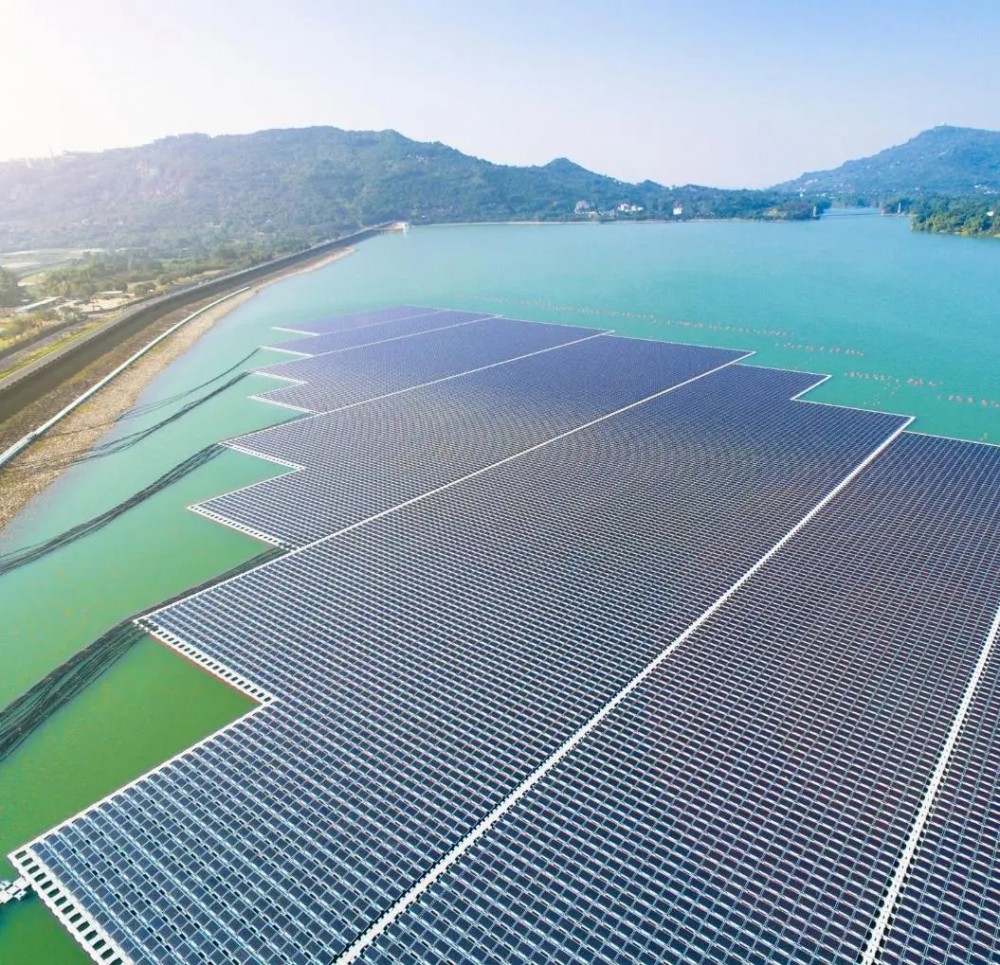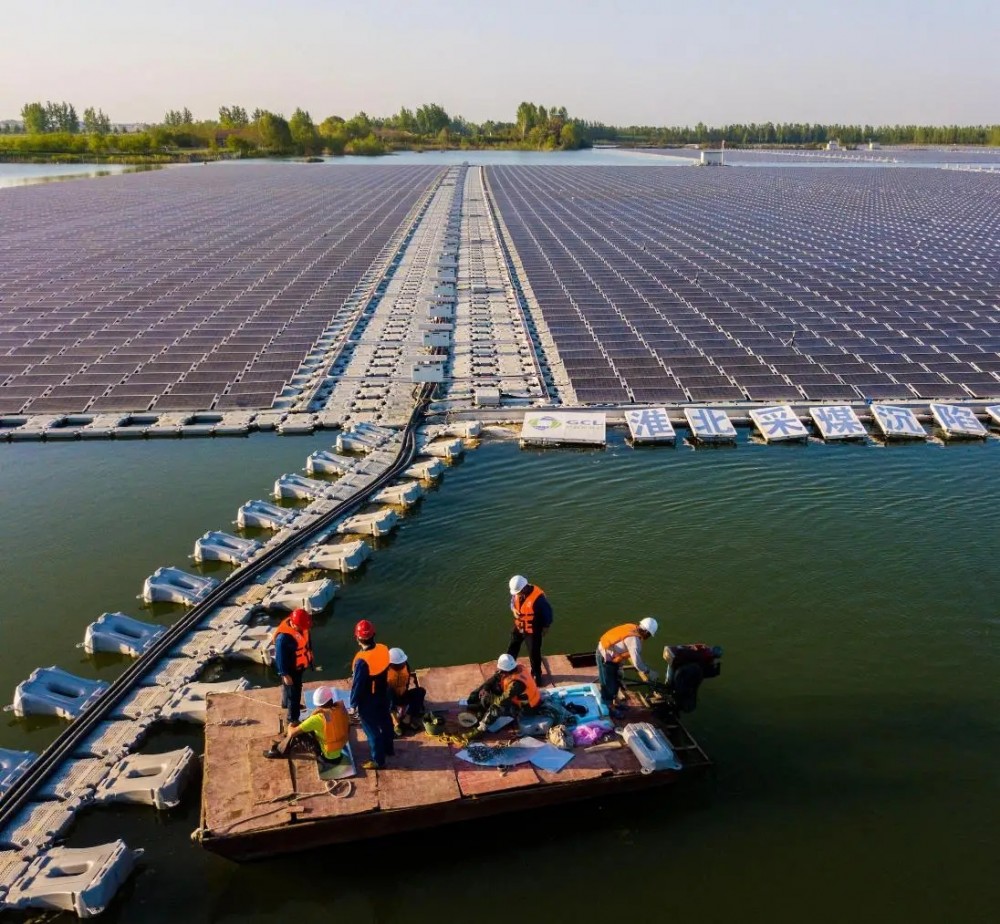
- English
- Español
- Português
- русский
- Français
- 日本語
- Deutsch
- tiếng Việt
- Italiano
- Nederlands
- ภาษาไทย
- Polski
- 한국어
- Svenska
- magyar
- Malay
- বাংলা ভাষার
- Dansk
- Suomi
- हिन्दी
- Pilipino
- Türkçe
- Gaeilge
- العربية
- Indonesia
- Norsk
- تمل
- český
- ελληνικά
- український
- Javanese
- فارسی
- தமிழ்
- తెలుగు
- नेपाली
- Burmese
- български
- ລາວ
- Latine
- Қазақша
- Euskal
- Azərbaycan
- Slovenský jazyk
- Македонски
- Lietuvos
- Eesti Keel
- Română
- Slovenski
- मराठी
- Srpski језик
Offshore floating photovoltaic
Floating photovoltaic systems installed on the calm seas of the equator could provide unlimited energy to populated regions in Southeast Asia and West Africa. A recent paper by the International Solar Energy Association pointed out that in the past 40 years, Indonesia has about 140,000 square kilometers of sea area that has not experienced waves of more than 4 meters, nor has it experienced strong winds of more than 10 meters per second. This area of sea is enough for the floating photovoltaic system to generate about 35,000 TWh of electricity per year, which exceeds the current total power generation capacity of various energy sources in the world.

While most of the world's oceans experience storms, some equatorial regions have favorable sea conditions, which means that extensive and expensive engineering is not required to protect floating PV systems at sea. A global high-resolution heat map shows that the Indonesian archipelago and the equatorial region near Nigeria are the most promising areas for installing offshore floating photovoltaic systems.
Global Photovoltaic Power Generation Prospects by Mid-Century
The research report predicts that the global economy will be largely decarbonized and electrified by mid-century, supported by substantial photovoltaic and wind power generation. Nigeria and Indonesia are expected to become the world's third and sixth most populous countries by 2050, respectively.
High population densities in these countries may lead to conflicts between agriculture, the environment and photovoltaics. Their tropical location means wind power resources are poor. Fortunately, these countries and their neighbors can harvest unlimited energy from photovoltaic systems floating in calm seas.
Less energy-intensive countries and regions can provide energy to more than 2 million people by installing offshore floating photovoltaic systems on the same area. These photovoltaic systems can be mounted on rooftops in arid regions, co-located with agricultural facilities, or floated on bodies of water. Floating PV systems can be installed on inland lakes and reservoirs, as well as offshore. Inland floating photovoltaic systems installed in various countries have great potential and are already growing rapidly.

Studies have shown that floating photovoltaic systems installed in areas with ocean waves not exceeding 6 meters and wind speeds not exceeding 15 m/s can generate up to 1 million TWh of energy per year, which is the annual energy demand of a fully decarbonized global economy to support a population of 10 billion 5 times. Most areas of favorable ocean conditions are close to the equator, such as in Indonesia and West Africa. These areas have fast population growth and rapid economic development, and the installation of offshore floating photovoltaic systems can help resolve land use conflicts.
Indonesian photovoltaic market development
Indonesia's population could exceed 315 million people by mid-century. Approximately 25,000 square kilometers of photovoltaic systems would need to be installed to meet Indonesia's electricity demand after the use of photovoltaic power generation is fully decarbonized. Fortunately, Indonesia has a huge potential for photovoltaic power generation, as well as a huge potential for building pumped hydro generation facilities, which can efficiently store electricity from photovoltaic systems.
Indonesia is a densely populated country, especially in Java, Bali and Sumatra. Fortunately, Indonesia has the option of installing a large number of floating PV systems in calm inland seas. Indonesia's 6.4 million square kilometers of ocean area is 200 times the area of floating photovoltaic systems needed to meet all of Indonesia's future energy needs.
Development Prospects of Offshore Floating Photovoltaic Systems
The waves in most of the world's seas exceed 10 meters, and the wind speed exceeds 20 meters per second. Several developers are working on engineered defenses for offshore floating PV systems that can withstand storms. In the area near the equator, due to the good ocean environment, the defense measures for installing offshore floating photovoltaic systems do not need to be so strong and costly.

The most promising areas for the development of offshore floating photovoltaic systems are concentrated within 5 to 12 degrees of equatorial latitude, mainly in the Gulf of Guinea near the Indonesian archipelago and Nigeria. These regions have low potential for wind power generation, high population density, rapid growth in population and energy consumption, and a large number of intact ecosystems. Tropical storms rarely affect the equator.
Installation of offshore floating photovoltaic systems in Central and South America is vulnerable to tropical storms and high waves. The Middle East holds great potential for development, although it will face stiff competition from onshore PV installations and wind farms. There are also some development prospects in some parts of Europe, such as the northern Adriatic and around the Greek Islands.

The offshore floating photovoltaic industry is still in its infancy. Compared with terrestrial photovoltaic systems, offshore photovoltaic panels have some inherent disadvantages, including seawater corrosion and marine pollution. Shallow seas are the first choice for installing offshore floating photovoltaic systems. As global warming is likely to alter wind and wave patterns, there is a need to minimize impacts on the marine environment and fisheries.
Despite these challenges, offshore floating PV systems could provide most of the electricity for countries in the calm waters of the equator. By mid-century, around one billion people in these countries are expected to rely primarily on photovoltaic power generation, leading to the fastest energy change in history.



